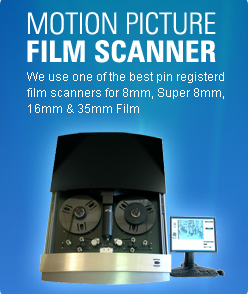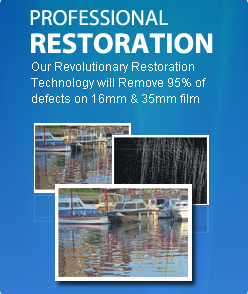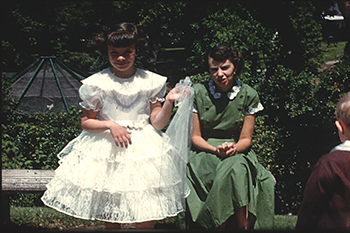
The first table shows how the same film looks using our 4 different processes. You can see that the difference can be significant for our Tucson customers.
The second table presents a case for scanning 8mm and Super 8 film at 2K resolution. In the past year we have done 20 comparisons. Contrary to popular belief, we do see a noticeable difference in quality between our Pro HD and Pro 2K process on 8mm and Super 8 film.
In general it is recommended that you scan at or above the resolution of the film. For 8mm and Super 8 that means scanning at HD or 2K.
8mm And Super 8 Film Tucson |
|
SD Scan
|
|
Pro HD Scan
|
|
Pro 2K Scan
|
|
Pro 4K Scan
|
|
Film Resolution |
|
Resolution of Film |
|
Film Grain
|
|
Film Grain vs Digital Pixel
|
|
So, for example, if you are looking for the best quality DVD, scan your 8mm or Super 8 at HD. If you are looking to go to BluRay then scan your 8mm or Super 8 at 2K.
Professional films usually have access to the original camera negative in addition to work prints, answer prints, etc. It is always better to scan using the original camera negative.
Tucson Fun Facts: In the period before the turn of the century, Tucson was a typical Wild West city, with gunslingers patrolling the area. The installation of the Davis-Monthan Air Force Base during World War II brought more growth; many of the men trained there fell in love with Tucson and settled there permanently. Today, Tucson is a growing city of over a half million residents and the heart of a booming high-technology region with more than 1,200 companies employing more than 50,000 people. Among its industries are aerospace and missile production, computer hardware and software, optics, biotechnology and electronics.
Arizona Fun Facts: Arizona, the Grand Canyon state, achieved statehood on February 14, 1912, the last of the 48 coterminous United States to be admitted to the union. Originally part of New Mexico, the land was ceded to the United States in 1848, and became a separate territory in 1863. Copper was discovered in 1854, and copper mining was Arizona’s premier industry until the 1950s. After World War II, the widespread availability of refrigeration and air conditioning caused Arizona’s population to boom and Phoenix to become one of the fastest growing cities in America.











